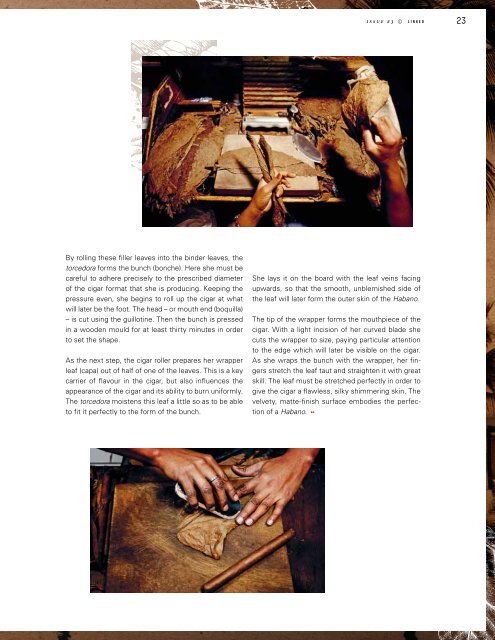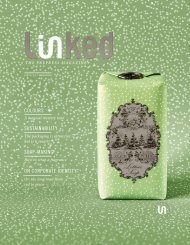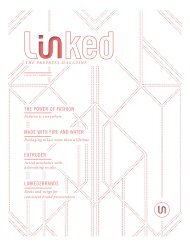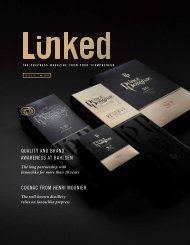Create successful ePaper yourself
Turn your PDF publications into a flip-book with our unique Google optimized e-Paper software.
issue #3 ©<br />
l i n k e d<br />
23<br />
By rolling these filler leaves into the binder leaves, the<br />
torcedora forms the bunch (bonche). Here she must be<br />
careful to adhere precisely to the prescribed diameter<br />
of the cigar format that she is producing. Keeping the<br />
pressure even, she begins to roll up the cigar at what<br />
will later be the foot. The head – or mouth end (boquilla)<br />
– is cut using the guillotine. Then the bunch is pressed<br />
in a wooden mould for at least thirty minutes in order<br />
to set the shape.<br />
As the next step, the cigar roller prepares her wrapper<br />
leaf (capa) out of half of one of the leaves. This is a key<br />
carrier of flavour in the cigar, but also influences the<br />
appearance of the cigar and its ability to burn uniformly.<br />
The torcedora moistens this leaf a little so as to be able<br />
to fit it perfectly to the form of the bunch.<br />
She lays it on the board with the leaf veins facing<br />
upwards, so that the smooth, unblemished side of<br />
the leaf will later form the outer skin of the Habano.<br />
The tip of the wrapper forms the mouthpiece of the<br />
cigar. With a light incision of her curved blade she<br />
cuts the wrapper to size, paying particular attention<br />
to the edge which will later be visible on the cigar.<br />
As she wraps the bunch with the wrapper, her fingers<br />
stretch the leaf taut and straighten it with great<br />
skill. The leaf must be stretched perfectly in order to<br />
give the cigar a flawless, silky shimmering skin. The<br />
velvety, matte-finish surface embodies the perfection<br />
of a Habano.









